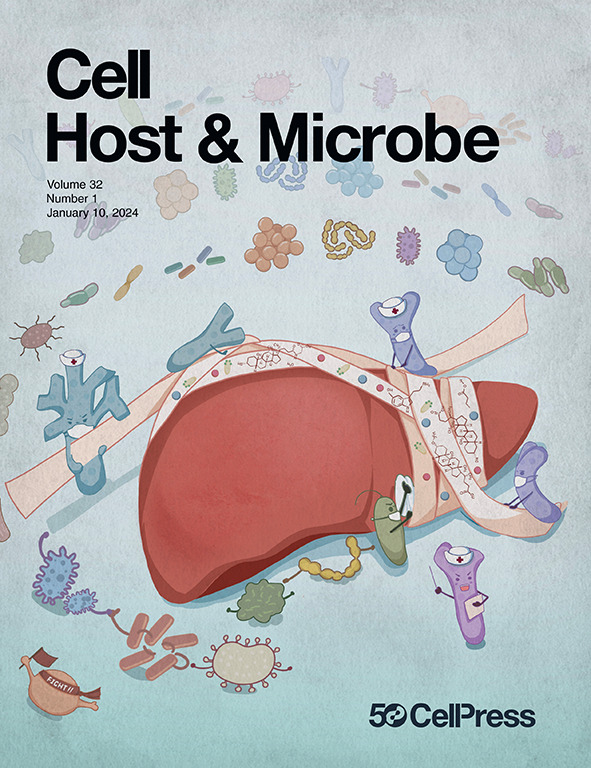Metatranscriptomics uncovers diurnal functional shifts in bacterial transgenes with profound metabolic effects
IF 18.7
1区 医学
Q1 MICROBIOLOGY
引用次数: 0
Abstract
Diurnal rhythmicity in the gut maintains gut integrity, circadian rhythms, and metabolic homeostasis. However, existing studies focus on microbial composition rather than transcriptional activity. To understand microbial functional dynamics, we characterize diurnal fluctuations in the mouse cecal metatranscriptome and metagenome under high-fat diet and time-restricted feeding (TRF). We show that metatranscriptomics uncovers TRF-induced time-dependent microbial functional shifts that are undetectable with metagenomics alone. We also found bile salt hydrolase (bsh) from Dubosiella newyorkensis exhibits diurnal expression in the TRF group. Engineering this bsh, along with other candidates, into a native E. coli chassis reveals distinct differences in deconjugation and amidation activities, underscoring functional specificity. In vivo, a D. newyorkensis bsh improves insulin sensitivity, glucose tolerance, and body composition, suggesting a direct role in TRF metabolic benefits. This study highlights how coupling metatranscriptomics with engineered bacterial systems is a powerful approach for uncovering time-dependent bacterial functions related to health and disease.

超转录组学揭示了具有深远代谢影响的细菌转基因的昼夜功能变化
肠道的昼夜节律性维持肠道完整性、昼夜节律和代谢稳态。然而,现有的研究侧重于微生物组成而不是转录活性。为了了解微生物功能动力学,我们对高脂肪饮食和限时喂养(TRF)下小鼠盲肠元转录组和宏基因组的日波动进行了表征。我们表明,元基因组学揭示了trf诱导的时间依赖性微生物功能变化,这是单独的元基因组学无法检测到的。我们还发现来自纽约杜氏菌的胆汁盐水解酶(bsh)在TRF组中呈昼夜表达。将该bsh与其他候选物一起工程到天然大肠杆菌的底盘中,揭示了解偶联和酰胺活性的明显差异,强调了功能特异性。在体内,d.n ewyorkensis bsh可改善胰岛素敏感性、葡萄糖耐量和身体成分,提示其在TRF代谢益处中起直接作用。这项研究强调了将亚转录组学与工程细菌系统耦合是揭示与健康和疾病相关的时间依赖性细菌功能的有力方法。
本文章由计算机程序翻译,如有差异,请以英文原文为准。
求助全文
约1分钟内获得全文
求助全文
来源期刊

Cell host & microbe
生物-微生物学
CiteScore
45.10
自引率
1.70%
发文量
201
审稿时长
4-8 weeks
期刊介绍:
Cell Host & Microbe is a scientific journal that was launched in March 2007. The journal aims to provide a platform for scientists to exchange ideas and concepts related to the study of microbes and their interaction with host organisms at a molecular, cellular, and immune level. It publishes novel findings on a wide range of microorganisms including bacteria, fungi, parasites, and viruses. The journal focuses on the interface between the microbe and its host, whether the host is a vertebrate, invertebrate, or plant, and whether the microbe is pathogenic, non-pathogenic, or commensal. The integrated study of microbes and their interactions with each other, their host, and the cellular environment they inhabit is a unifying theme of the journal. The published work in Cell Host & Microbe is expected to be of exceptional significance within its field and also of interest to researchers in other areas. In addition to primary research articles, the journal features expert analysis, commentary, and reviews on current topics of interest in the field.
 求助内容:
求助内容: 应助结果提醒方式:
应助结果提醒方式:


